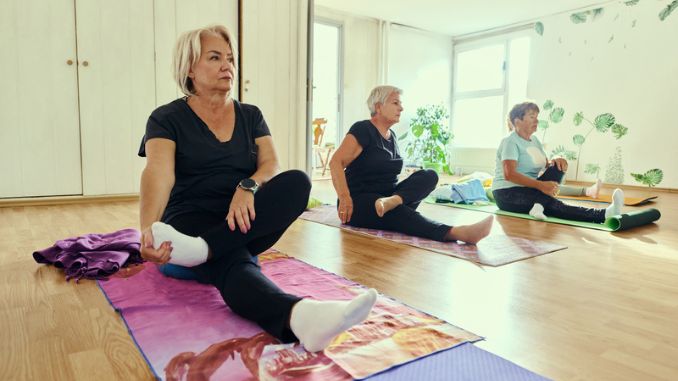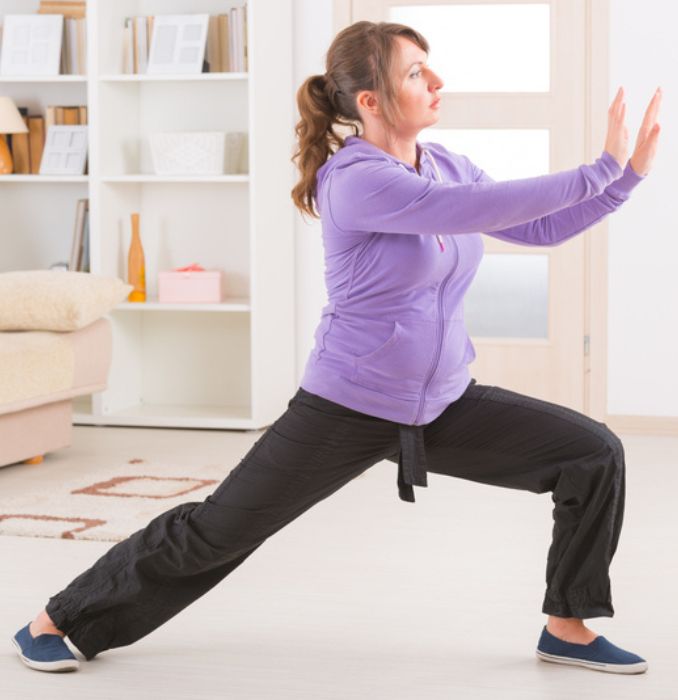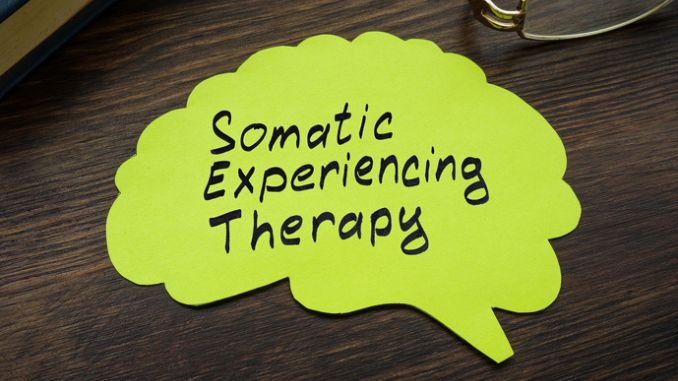The connection between our mind and body often gets overlooked. However, somatic therapy exercises are gaining popularity as a powerful tool to unlock the potential of our bodies and achieve total well-being.
Therefore, these exercises focus on restoring harmony and balance by activating the body's natural healing mechanisms.
What Is Somatic Therapy?

Somatic therapy is a healing method that sees the mind and body as closely connected and working together. Moreover, it emphasizes the importance of bodily sensations, movements, and awareness in promoting energy healing and well-being.
Therefore, unlike traditional talk therapy, somatic therapy incorporates physical techniques and exercises to help individuals release tension, regulate emotions, and reconnect with their bodies.
Understanding The Mind-body Connection
The mind-body connection is about how our thoughts, feelings, and what we physically feel are linked together. Additionally, our bodies can hold onto old traumas, stress, and emotions, which may manifest physically as tension, pain, or discomfort.
Furtheremore, somatic therapy helps us uncover that by working through these physical signs of emotional stress.
A study in "Frontiers in Neuroscience" looked at how Somatic Experiencing (SE®) [¹] training helps professionals who treat trauma. Thus, these professionals often get stressed and burned out from their work.
The study found that SE® training, which focuses on how the body reacts to stress, really helped them over three years. Moreover, somatic Experiencing® (SE®) training teaches methods to release stress and trauma stored in the body. It focuses on body awareness and natural healing processes.
It made them more resilient, reduced their anxiety and physical symptoms, and improved their overall health and social life. Meanwhile, this suggests SE® training could be a great way to boost the well-being and work effectiveness of trauma treatment professionals.
How Somatic Therapy Exercises Help Heal Emotional Trauma

Emotional trauma can deeply affect our minds and bodies, making life harder. Meanwhile, there's good news—somatic therapy exercises offer a promising way to heal by addressing trauma's physical effects.
When we go through trauma, our bodies might react by freezing, fleeing, or fighting. Therefore, this can leave behind tension and unspent energy, causing both physical and emotional issues.
Somatic therapy exercises help release this tension and kickstart the body’s own healing process. Moreover, through gentle movements, deep breathing, and focusing on body sensations, people can let go of trapped energy and find more balance and peace.
These activities also help people feel more in control and empowered, moving them from pain to freedom.
Research supports somatic therapy’s benefits, showing it can lessen symptoms of PTSD, anxiety, and depression by dealing with trauma's physical side. Meanwhile, this approach helps heal both body and mind.
5 Effective Somatic Therapy Exercises For Total Well-being
1. Deep Breathing

Deep breathing is a fundamental somatic therapy exercise that helps activate the body's relaxation response. Moreover, by focusing on slow, deep breaths, individuals can calm their nervous system and reduce stress and anxiety.
First, start by finding a comfortable seated or lying position. Moreover, gently close your eyes and proceed to draw a slow, deep breath through your nostrils, focusing on allowing your abdomen to expand outward as you inhale.
Therefore, this breathing technique is effective for initiating relaxation. Afterwards, exhale slowly through your mouth to release any tension or stress. Lastly, continue this for a few minutes until you feel fully relaxed.
2. Body Scan Meditation

Body scan meditation is a powerful technique that helps cultivate body awareness and release tension. Start by finding a quiet and comfortable space. Close your eyes and bring your attention to your breath.
Slowly scan your body from head to toe, noticing any areas of tension or discomfort. As you encounter these areas, breathe deeply into them and imagine the tension melting away.
Continue scanning your body, bringing awareness and relaxation to each part. This exercise can be done in as little as five minutes. It can be a valuable tool for reducing stress and promoting relaxation.
3. Mindful Movement

Mindful movement exercises, such as yoga or Tai Chi, can help integrate the mind and body while promoting relaxation and self-awareness. Find a mindful movement practice that resonates with you and commit to practicing it regularly.
Whether it's a gentle yoga flow or a Tai Chi sequence, these exercises can help you cultivate mindfulness, release tension, and promote overall well-being.
4. Grounding Exercises

Grounding exercises are great for people dealing with anxiety or feeling disconnected. They help you focus on the present and feel more stable.
Standing barefoot and feeling your feet on the ground is a good exercise. Notice the pressure, warmth, and surface under your feet. Breathe deeply and imagine roots growing from your feet into the earth, making you feel secure and balanced.
The Transformative Benefits of Somatic Therapy Exercises

A study in an American Psychological Association[²],journal showed that Somatic Experiencing (SE) a therapy focusing on the body, greatly helped reduce PTSD and depression symptoms. After 15 weeks of SE therapy, participants improved significantly compared to those waiting for treatment, highlighting SE's effectiveness in treating PTSD.
Somatic therapy exercises go beyond easing pain and relaxing the body. By involving both mind and body, they unlock numerous physical, mental, and emotional benefits.
Heightened Self-Awareness
Somatic therapy exercises help you become more aware of yourself by making you pay attention to your body's feelings, emotions, and thoughts. This increased self-awareness can give you a clearer understanding of who you are.
Emotional Regulation
Somatic therapy exercises help people find good ways to handle their emotions. These exercises offer a safe way to let out built-up feelings, helping individuals understand and express their emotions positively.
Increased Resilience
Regularly doing somatic therapy exercises helps people become more resilient and handle stress better. These exercises trigger the body's natural calm response, making it easier to deal with tough situations and adapt smoothly.
Enhanced Creativity And Intuition
Somatic therapy exercises help you connect deeply with your body, boosting creativity and innovation. This connection allows you to tap into your natural creativity and intuition, improving your ability to solve problems and make decisions.
Enhanced Body-Mind Connection
These exercises strengthen the link between the mind and body, creating a feeling of being complete and connected. Somatic therapy exercises like gentle stretches and careful movements can ease physical tightness and help with ongoing pain.
Greater Sense Of Empowerment
Somatic therapy exercises help people actively participate in their own healing and wellness. By reconnecting with their bodies and paying attention to their needs, individuals can feel more in control and empowered in their lives.
Stress Reduction
Somatic therapy exercises trigger the body’s natural ability to relax, reducing stress hormones and helping you feel calm and peaceful.
Conclusion
Somatic therapies use special techniques to improve how your body and mind work together, helping you manage chronic stress. A mental health professional can guide you in focusing on bodily sensations and using breathing exercises to relax.
These practices help identify where stress is held in the body and teach you to release tension.
Regularly including somatic therapy exercises in your daily routine can transform your well-being by promoting emotional healing, overall health, and physical relaxation. This approach is excellent for relieving chronic pain, reducing stress, and enhancing emotional well-being.
Are you feeling overwhelmed by daily stress? Ready to reclaim your peace of mind and improve your overall well-being? Join our 14-Day Stress Reduction Quick Start Program and embark on a journey to a calmer, more balanced life!
Frequently Asked Questions
How can I do somatic therapy by myself?
To practice somatic therapy alone, find a quiet spot and start with deep breathing to calm your mind and relax your body. Pay attention to each breath and your body's sensations. Do a body scan from head to toe, noting any tension. Stretch tight spots gently, feel your feet on the ground to stay present, and do mindful movements like slow stretching or yoga. Listen carefully to your body throughout.
Who needs somatic therapy?
Somatic therapy can be beneficial for individuals experiencing a range of conditions where emotions manifest physically, causing discomfort or stress-related symptoms. It may be particularly helpful for those with:
Post-traumatic stress disorder (PTSD)
-Complicated grief
-Depression
-Anxiety
-Trust and intimacy issues
-Self-esteem problems
How often should you do somatic exercises?
Aim to practice daily, even for just a few minutes, to help your body and mind adapt. If busy, try three times a week. Consistency matters more than session length, making a significant difference in your relaxation and connection.
How to find a qualified Somatic Therapist?
While you can practice somatic therapy exercises alone, working with a qualified somatic therapist can be very helpful. They offer personalized support and guidance, enhancing your healing journey. When finding a therapist, do research on professional associations, directories, experience, and whether you feel comfortable with them. It's also useful to read reviews from their previous clients.








